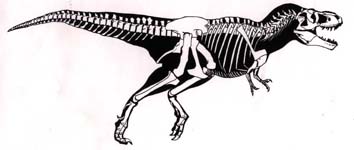
 |
|
|
||||||||||||||||
 |
|
|
||||||||||||||||||||
Inter-bone analysis compares one bone to another, and is most effective in elucidating thermoregulatory physiology when a bone from the body core is compared with a bone from the extremities. (Barrick, 1998) Endotherms must maintain a constant core temperature in order for metabolic processes to work. In a cold environment, body temperature will be preferentially maintained in the body core at the expense of the extremities, a process called regional heterothermy (Barrick, 1998). If bone is deposited in a cold period the isotopic ratios will vary between core and limb bones (Barrick, 1998.) The deposition of bone, under variable temperatures, may seem unlikely to you if you think of a cold period in terms of the time spent running from your home to your car in a Canadian winter. Animals that spend their winters outdoors deposit bone in under varying seasonal temperatures. |
 |
Oxygen isotope analysis gives paleontologists a quantitative methods to study dinosaurs. |
|
|
||||||||||||||||||||||||||||||||||||||||||||||||||||||||||||||||||||||||||||||||
| [Home] [Oxygen] [Carbon] [Strontium] [Limitations] [References] |